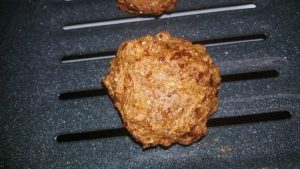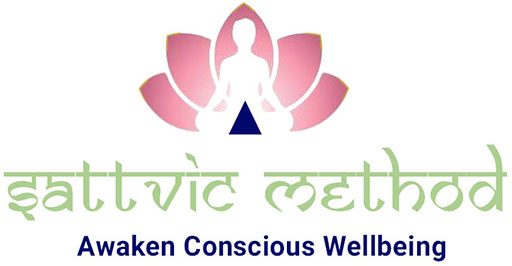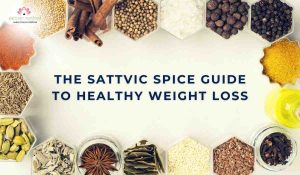A Recipe Makeover: From Comfort Food to Conscious Nourishment
During the COVID-19 lockdown, when the world slowed down and kitchens became sanctuaries, my sister Masha from Russia shared a recipe that had become her favorite comfort bake—cottage cheese bread. Like many others during that time, she found solace in cooking and baking while working from home. The act of creating nourishing food offered her a sense of calm and creativity amidst uncertainty. Her message came with excitement: “Try this recipe! It’s so easy and comforting!”
The recipe she sent looked delicious, and the photos of her golden, warm buns made my mouth water. Yet, being on a sattvic journey, I had to pause and assess the ingredients. Masha, knowing about my commitment to a sattvic lifestyle, asked me a thoughtful question: “Can this be made sattvic?” It was a beautiful moment of cross-cultural sharing and curiosity about conscious eating.
So, in this post, I want to take you through the sattvic makeover of Masha’s cottage cheese bread—a transformation of not just ingredients but intention, energy, and nourishment. This is more than a recipe; it’s a journey toward mindful choices and food that uplifts body, mind, and spirit.
Original Recipe by Masha
- 360 grams of flour (any kind can be mixed) = approx. 1.5 cups
- 1 tsp baking soda
- 200 ml cottage cheese (about 180 grams) = 6.35 ounces
- 1 tsp sugar
- 1 tsp salt
- 300 ml kefir = 10 ounces
- Any seeds (optional)
Instructions:
Preheat oven to 375°F and bake for 50 minutes. Masha used American cottage cheese, and she drained the excess liquid before mixing. The dough is thick, perfect for buns or bread.
Here are some pictures Ma Masha shared with me.


Is the Original Recipe Sattvic?
Not entirely. The presence of fermented ingredients like kefir, baking soda, and store-bought cottage cheese makes it non-sattvic. According to sattvic dietary guidelines (rooted in Ayurveda and yogic traditions), food should be fresh, whole, non-fermented, and mildly spiced. The aim is to support clarity of mind, spiritual awareness, and balanced bodily function.
Sattvic Makeover: What We Changed and Why
1. Eliminate or Replace Fermented Ingredients
Kefir is a fermented milk product and is not sattvic. Instead, I opted to use homemade paneer (cottage cheese) and lemon juice to activate the dough. Lemon helps create the fizz reaction with baking soda, making the dough rise without yeast or kefir.
2. Salt Adjustment
Store-bought cottage cheese already contains salt. To align with sattvic principles of minimal salt use, I removed the extra teaspoon of salt from the recipe. This change was surprisingly pleasant—the natural taste of the ingredients came through beautifully.
3. Sugar Placement
Rather than mixing sugar into the dough, I recommend sprinkling raw sugar over the warm cookies post-bake. Brushing them lightly with a blend of oil and water or oil and milk gives them a slight glaze and helps the sugar crystals stick.
Here are two brush-and-glaze variations:
- 1 tbsp oil + 1 tbsp milk → beat well and brush over warm baked items, then sprinkle sugar.
- 1 tbsp oil + 1 tbsp water → for a dairy-free option.
4. Shift in Texture and Moisture
To reduce moisture and make the recipe more versatile, I turned it into a savory cookie recipe. For those who prefer bread or buns, simply increase the liquid (paneer water or plant-based milk) to achieve a softer dough.
Why Cooking Temperature Matters in a Sattvic Diet
Sattvic cooking favors moderate heat and minimal oil to preserve the natural vitality of ingredients. High-heat cooking (above 350°F) can lead to the formation of harmful compounds like acrylamides and polycyclic aromatic hydrocarbons, especially in starchy foods.
To align with sattvic cooking practices:
- Lower oven temp to 325°F
- Increase baking time slightly for gentle cooking
- Avoid charring or over-baking
This slow and steady method not only preserves nutrients but also infuses the food with calm, meditative energy—perfect for those on a yogic path.
Final Sattvic Recipe: Savory Biscuits (Cookies)
Ingredients:
- 1.5 cups whole wheat or multi-grain flour
- 200 ml homemade paneer (crumbled)
- 1 tsp baking soda
- Juice of 1 lemon
- Optional: Red chili powder or black pepper for flavor
- 1 tbsp oil
- Sugar for post-bake sprinkle
- Optional: Caraway, cumin, or fennel seeds for sattvic flavor enhancement
Instructions:
- Preheat oven to 325°F.
- In a mixing bowl, combine flour, paneer, and baking soda.
- Add lemon juice and a tablespoon of oil. Mix into a dough. Add a little water or milk if needed for consistency.
- Roll into small cookie shapes or press into a tray.
- Bake for 30–35 minutes or until golden brown.
- While still warm, brush with your glaze of choice and sprinkle sugar (optional).
From Masha’s Kitchen to Yours
Masha’s intention was love, warmth, and connection—and that stayed intact through the sattvic transformation. Her original recipe fed her soul during lockdown, and now, in a new form, it continues to nourish, inspire, and uplift.
We also shared this sattvic version on our YouTube channel. You can watch the step-by-step recipe here: Savory Cookies


If you have family favorites or heirloom recipes you’d like to convert into sattvic versions, I’d love to help! Email your recipes to livingsattva@yourdomain.com, and together, we’ll give them a conscious makeover.
Cooking is more than combining ingredients—it’s an energetic exchange. When we prepare food with awareness, intention, and care, we create more than nourishment. We create harmony.
Try this sattvic makeover for yourself. Bake with intention. Eat with gratitude. And if you do, don’t forget to share, comment, and subscribe to our blog and YouTube channel. Your feedback helps us bring more conscious recipes to our growing community.
Stay sattvic. Stay grounded. Stay nourished.




